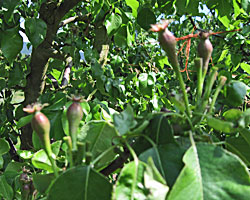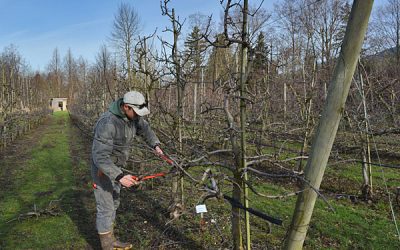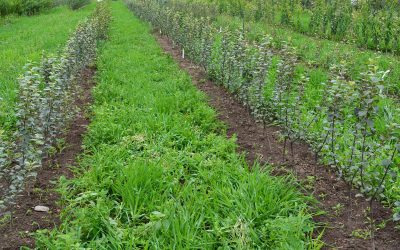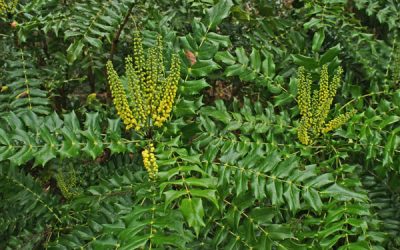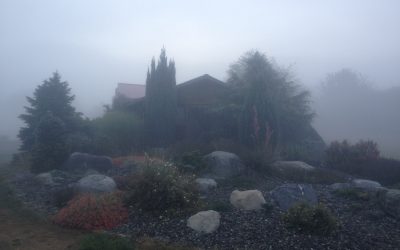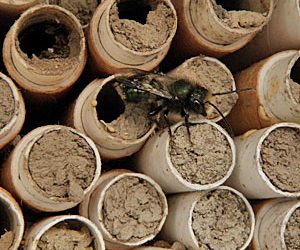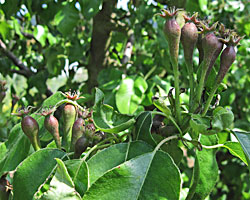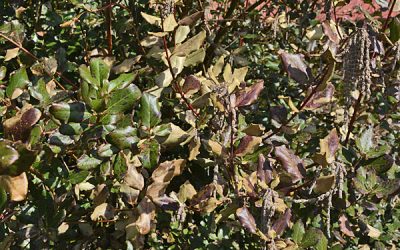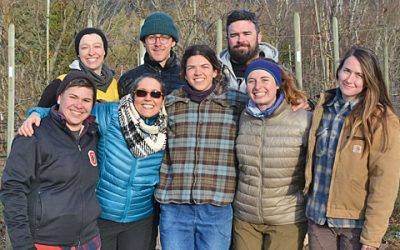Updates From The Farm
Your Home Orchard in the Crazy 2020 Spring.
In so many ways, 2020 has been a crazy wild ride for everyone. In addition to the world wide pandemic throwing us into chaos, Mother Nature and the weather are also keeping the home orchardist on their toes! A mild February was followed by a March that had both...
Eager for Spring
The last few weeks have thrown the weather at us, hasn't it? Cold, snow, then wet, wet, wet. But once in a while the sun peaks out and reminds us that spring is just around the corner. We took advantage of a little of that sunshine to walk around the farm- here are...
How We Produce Fruit Trees
Cloud Mountain Farm Center is ramping up for a new nursery season! And February through early April is the best time for planting bare root fruit trees. Fruit trees are produced by grafting variety wood to rootstocks, then field growing the resulting trees until they...
Holiday Thoughts
Are gardeners on your holiday shopping lists this year? We have some ideas that might help. Winter Interest for the Garden- some plant suggestions Hint: a gift card can work towards adding plants, or you can order for spring pick up. Let us know if you're ordering...
Gift Recommendation for the Gardener or Farmer on Your List
Felco hand pruners would be welcomed by any gardener (hint: include a holster so they are harder to lose!). Felcos aren't like any other hand pruner and are the most used and recommend by professionals. All parts are replaceable, blades can be easily sharpened by...
Winter Project for the Home Gardener and Small Farmer, Part 2
We're expected to get fog, rain, frost, maybe even snow, and everything in between, in the coming weeks, but we don’t get tornadoes here in the PNW, so stop blaming them for your mess in the shed and barn. No judgement...
Winter Projects for the Home Gardener and Small Farmer, Part 1
The temperatures are dropping, cover crops have been seeded, and the garden beds have been tucked in for their long winter nap. Spring seems so far away, but don’t fret, there’s still lots you can do to keep your thumbs green. In fact, the winter can be just as busy...
Apple Maggot Timing
People have starting asking us about when to spray for apple maggot. This is a complex pest to control in orchards and home gardens, so it is a good idea to understand its life cycle. Apple maggot, Rhagoletis pomonella, is a...
Encouraging Pollinators
Celebrate Pollinator Week! Most people have heard the news that honeybees are in trouble in this country. If you've planted fruit trees in your garden, you have even more to worry about- who is going to pollinate those flowers so you get the bounty of fruit you were...
Thinning Fruit
We cannot overemphasize the importance of thinning the young fruit on your trees. Now is a good time to start thinning. Early thinning can help break the tendency of biennial (every other year) bearing that is common in some apple and pear varieties, and ensuring you...
Winter Damaged Plants
With the wild weather of late December and early January behind us, and the return to more normal winter weather, we're starting to see winter damage on many plants, especially broadleafed evergreens. Even 'hardy' evergreens and some conifers that experienced the...
Welcome our 2019 Interns!
Every winter we welcome a new group of interns for a season of working and learning on the farm. The first week of March we welcomed eight new people to the team, each person bringing a unique set of skills and experiences. Over the course of the next eight months we...

